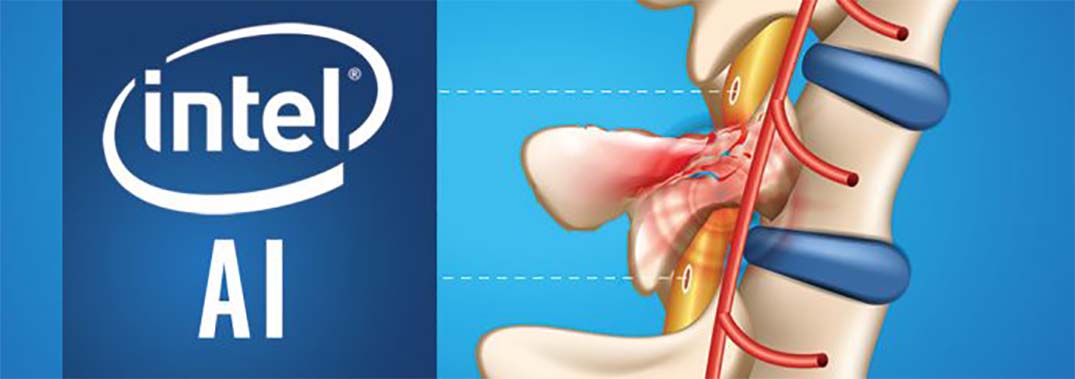Brown University is exploring concepts with Intel technology for an Intelligent Spine Interface project that aims to use artificial intelligence (AI) technology to restore movement and bladder control for patients paralysed by severe spinal cord injuries.
“As a Ph. student at Brown, I investigated how to interface the brain with machines as an application,” says Naveen Rao, Intel corporate vice-president and GM of the AI Products Group. “Now, at Intel, we’re combining our AI expertise with Brown University’s cutting-edge medical research to help solve a critical medical problem: how to reconnect the brain and spine after a major spinal injury.”
During the two-year programme, researchers will record motor and sensory signals from the spinal cord and use artificial neural networks to learn how to stimulate the post-injury site to communicate motor commands.
Surgeons at Rhode Island Hospital near Brown University will implant electrode arrays on both ends of a patient’s injury site, creating an intelligent bypass to eventually allow the severed nerves to communicate in real time.
Researchers are considering Intel AI open source software such as nGraph and Intel AI accelerator hardware to meet the realtime requirements of this application.
“A spinal cord injury is devastating, and little is known about how remaining circuits around the injury may be leveraged to support rehabilitation and restoration of lost function,” says David Borton, assistant professor of engineering at Brown University.
“Listening for the first time to the spinal circuits around the injury and then taking action in real time with Intel’s combined AI hardware and software solutions will uncover new knowledge about the spinal cord and accelerate innovation toward new therapies.”
The human body is unable to regenerate severed nerve fibres. In the case of a severe spinal injury, the brain’s electrical commands no longer reach the muscles, which can lead to paralysis.
The National Spinal Cord Injury Statistical Center estimates there are 291 000 people with spinal cord injuries living in the US, with more than 17 000 new cases each year. Over 30% of those spinal cord injuries result in complete tetraplegia or paraplegia.

